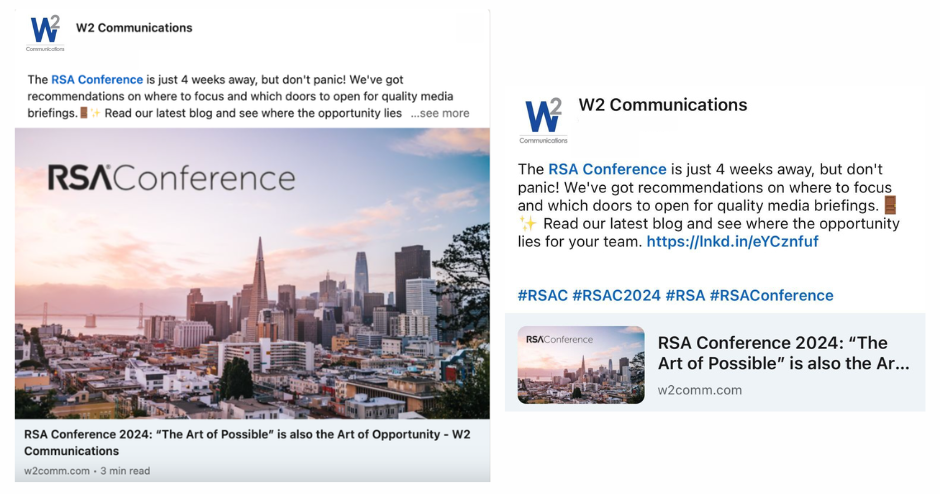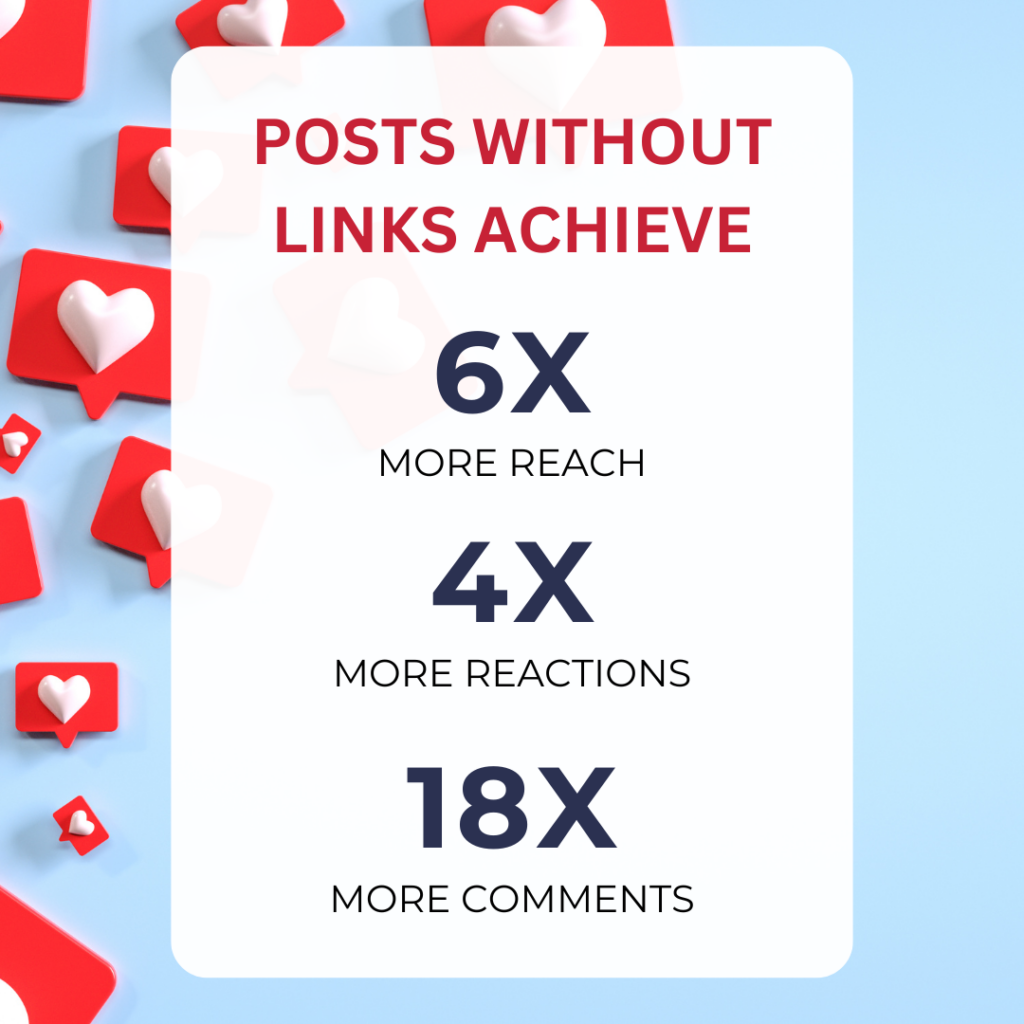It’s one of the most enduring debates in social media strategy: To link or not to link? If you’ve noticed that some of your recent social media posts are falling flat, the use of links could be the cause. Two major social media platforms have confirmed adjustments to their algorithms to minimize the impact of external links.
What We Know About Social Media Linking
LinkedIn recently announced smaller link preview images (think a thumbnail sized image) for organic social posts to keep users on the platform. Eventually, this will apply to all organic posts with external links, while sponsored content ads will continue to remain the same. As of now, this is a minor change to the platform, but it does show signs that LinkedIn is making a play to keep users on their site for longer.

In a similar move, X (formerly Twitter) acknowledged that posting links cuts down on the time users spend on the site. The algorithm is built to optimize time spent on the platform and, therefore, posts with links will get less attention. What does X owner Elon Musk suggest? Post long-form content to get your point across without the use of links. However, utilizing long-form content on X requires premium subscriptions, as it exceeds X’s character limit for free users.
What These Changes Mean for the Social Media Algorithm

According to a 2021 Hootsuite experiment, posts without links achieve 6x more reach, almost 4x more reactions, and 18x more comments than those with links. Posts containing links already experience low engagement, and this change is likely to reduce it further. Not only are smaller preview links easy to overlook in social feeds, but platform algorithms will continue to limit the organic reach and visibility of these posts.
These changes also present the opportunity to reaffirm the primary purpose of organic social media: building and fostering a community around your brand. Rather than frequently directing users to external sites, consider shifting your social strategy to focus more on thought leadership and evergreen content that encourages interaction within the platform. This approach will strengthen your connection with your audience and establish your brand as an expert in your industry.
Where Do We Go From Here with Social Media Linking?
W2 Communications’ social media team is keeping an eye out for even more changes across the landscape. Be mindful that these changes may only be the beginning phases of a larger strategy to keep people on these sites longer. Our best advice?
- Launch a Link Testing Strategy – Start A/B testing posts with and without links, and post longer form content when and where you can. Specifically for LinkedIn, without the boldness of visual elements that accompanied a link previously, it is critically important to create compelling and effective copy.
- Hook Them Early – It will be harder to keep viewers engaged, so you will need a strong hook and notable insights to keep readers’ attention. Ensure the content you’re putting out there is valuable to your audience!
- Utilize Long Form Social Copy: Embrace extended social content where platforms permit. Algorithms now prioritize posts that keep user attention within the platform, enhancing visibility for comprehensive content shared directly in-feed.
- Lastly, Consider using Large-Format Images – Gone are the days of the convenience of pre-populated images with links. Marketers must consider other visual elements to keep viewers engaged.
Need further guidance or help with your company’s overarching social media strategy and execution? Contact us and let’s discuss how we can help!




